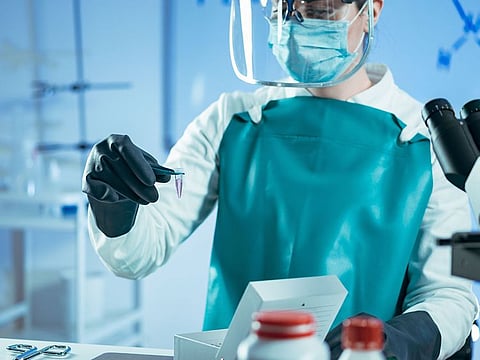UAE: What is stem cell banking? Is it a good idea?
What are stem cells? Why should we harvest them at birth?

If you’ve been to a paediatric or gynaecologist of late, odds are you’ll have noticed pamphlets explaining cord banking opportunities. Wonder if it’s right for you or even if you should consider it? Before you take a decision, read this:
What exactly are stem cells?
Dr Vaidehi Shah, Specialist Obstetrics and Gynaecologist with Prime Medical Center, explains: “Stem cells are special cells that have the potential to develop into many different types of cells in the body. Stem cells can be found in the blood and bone marrow in adults and children – and in the umbilical cord of a newborn.”
Stem cells are special cells that have the potential to develop into many different types of cells in the body. Stem cells can be found in the blood and bone marrow in adults and children – and in the umbilical cord of a newborn.

If the stem cells are available no matter what the age – why should they be harvested at birth?
Dr Shah explains: “There are advantages of using stem cells from cord blood over that from bone marrow. These are:
How do the banks ensure the cells stay healthy?
Dr Mohamed Khalafallah, Consultant – Obstetrics and Gynaecology at Bareen International Hospital, explains: “ To maintain the biological assets of stem cells, banks holding stem cells utilise low temperatures to shield the stem cells from degeneration or contamination.
What’s the most commonly used stem cell treatment?
“The routine use of stem cells in therapy has been limited to blood-forming stem cells (hematopoietic stem cells) derived from bone marrow, peripheral blood or umbilical cord blood. Bone marrow transplantation is the most familiar form of stem cell therapy and the only instance of stem cell therapy in common use. Stem cells are used primarily for treatment of certain cancers such leukaemia, among other diseases of the blood and bone marrow,” explains Dr Khalafallah.
Stem cells are used primarily for treatment of certain cancers such leukaemia, among other diseases of the blood and bone marrow.

However, research is underway to explore other opportunities. “Researchers are currently examining the use of stem cells to regenerate damaged or diseased tissue in many conditions, including heart disease, Parkinson's disease, spinal cord injury, diabetes mellitus, amyotrophic lateral sclerosis, arthritis, burns,” he explains.
As per American College of Obstetrics and Gynaecology, these stem cells can be used to treat around 70 types of diseases including genetic disorders, diseases of immune system, blood cancers also known as leukaemia, lymphoma and neurological disorders, adds Dr Shah.
How is the baby’s cord blood collected?
The maternity hospital’s labour team of physicians, nurses, and midwives collect the baby’s cord blood. Immediately after the baby’s birth, a sterile needle is inserted into the cord and the blood withdrawn into the blood bag from the umbilical cord and the placenta, using the force of gravity. It doesn’t pain or harm the mother or the baby. The baby’s cord blood is maintained at room temperature temporarily until it is transferred from the hospital to Dubai Cord Blood and Research Centre – if this bank if being used - by the concerned transportation team, explains the Dubai Health Authority’s website.
What’s the shelf-life of stem cells?
Dr Shah says there’s no expiry date for stem cells. But evidence exists that they can be stored for about 20 years.
Dubai Cord Blood and Research Centre puts the number at 30.
Have a topic you'd like us to cover? Write to us at parenting@gulfnews.com
Sign up for the Daily Briefing
Get the latest news and updates straight to your inbox



